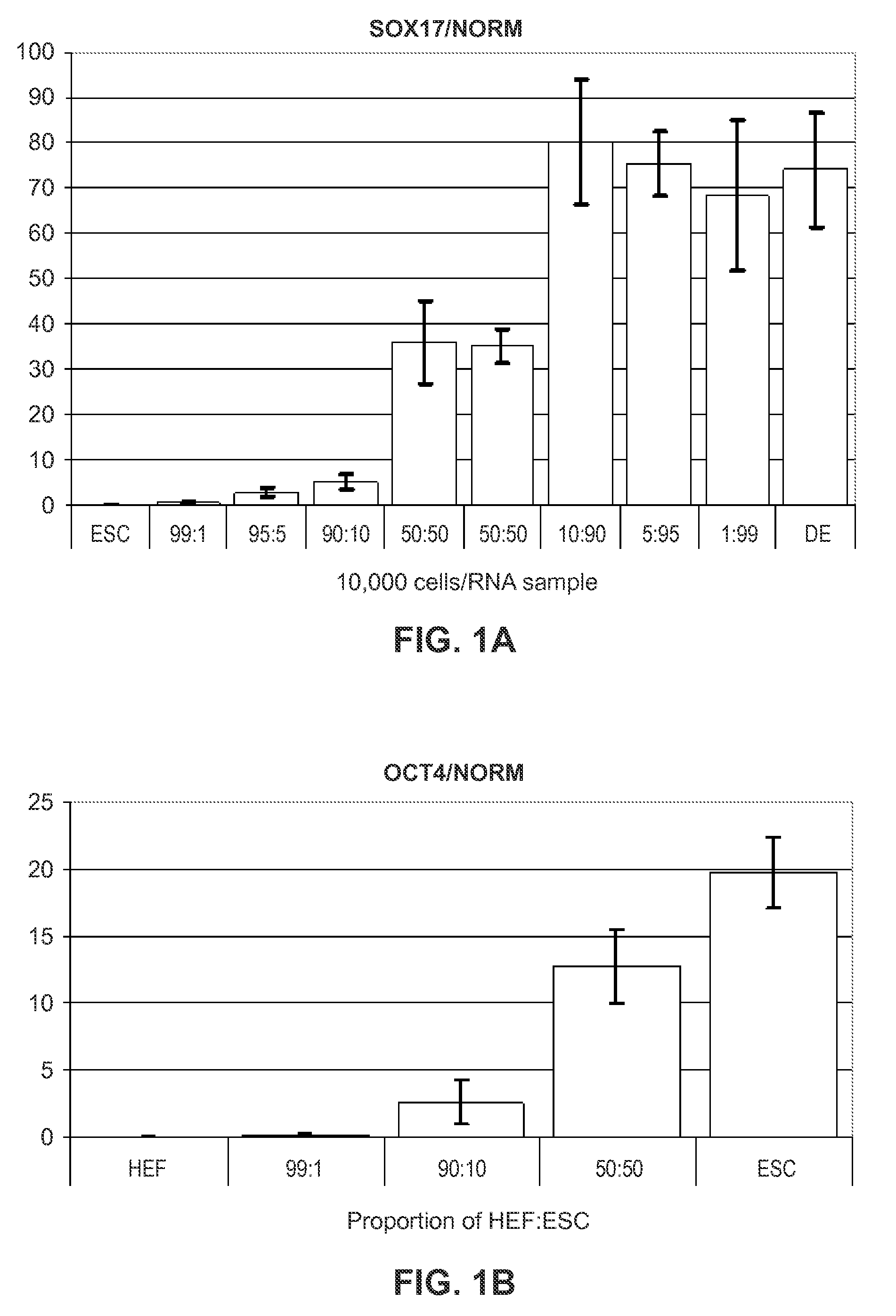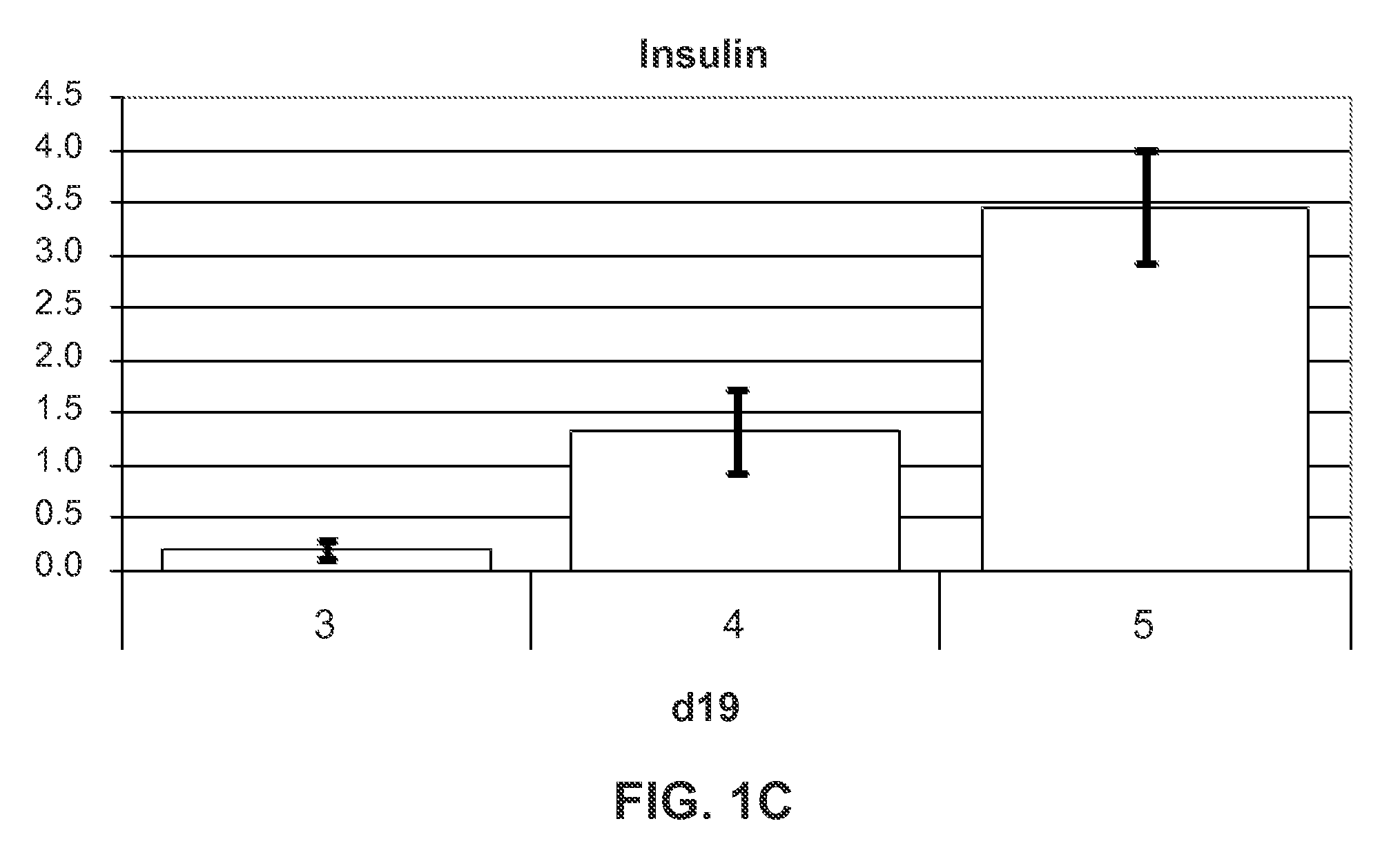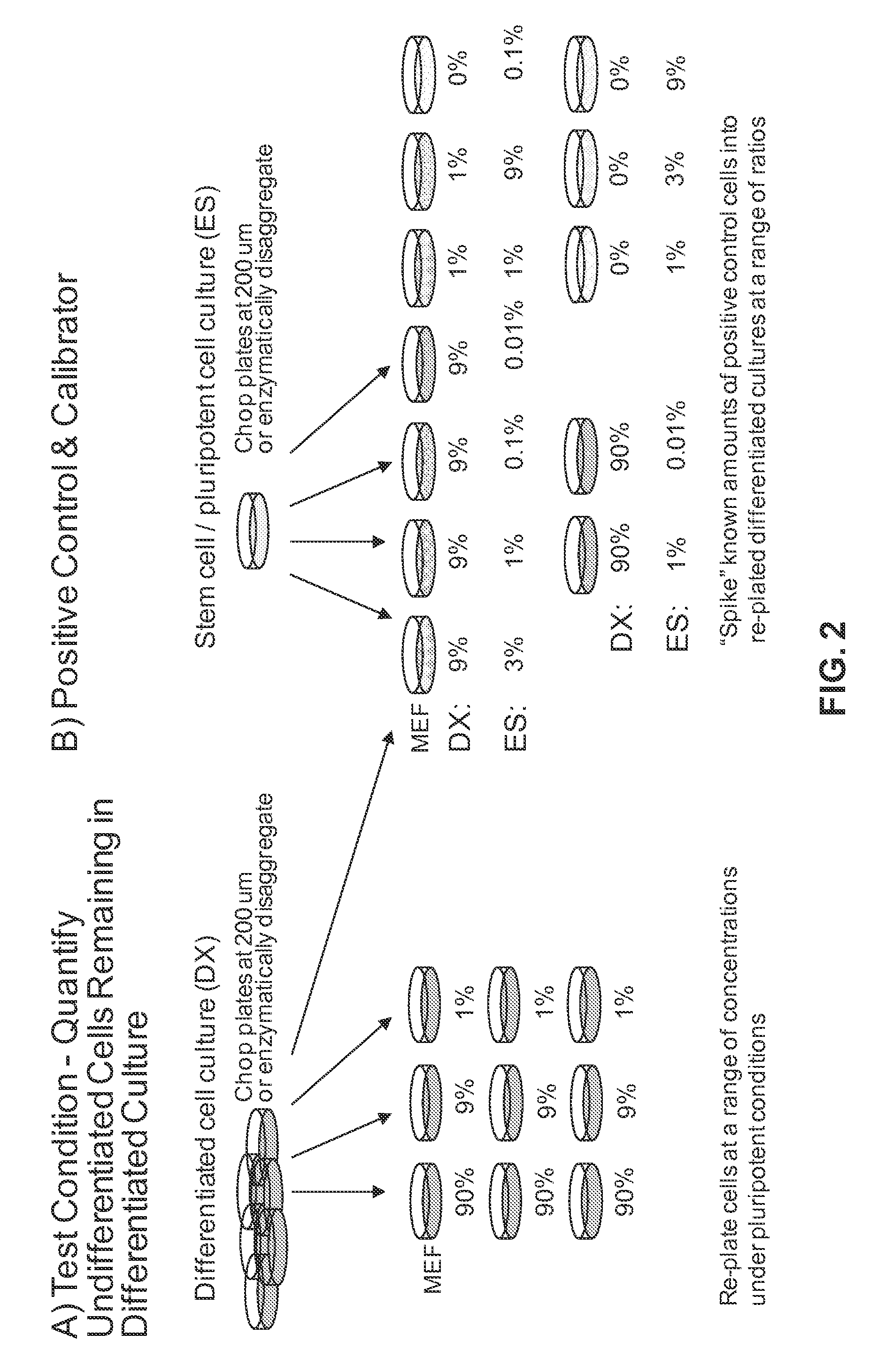Agents and methods for inhibiting human pluripotent stem cell growth
a technology of hescs and stem cells, applied in the field of cytotoxic or inhibitory agents of pluripotent stem cells, can solve the problems of hescs or hes cells, differentiation methods may not specify all hescs homogeneously, etc., and achieve the effect of improving the measure of safety against teratoma formation
- Summary
- Abstract
- Description
- Claims
- Application Information
AI Technical Summary
Benefits of technology
Problems solved by technology
Method used
Image
Examples
example 1
Identification of Compounds Cytotoxic to hES Cells but not Differentiated Cells
[0187]Screening For Candidate Compounds Inhibiting or Cytotoxic to Human Embryonic Stem Cells (hESCs). Certain compounds were selected from the Library of Pharmacologically Active Compounds (LOPAC), specifically the LOPAC1280™ collection (Sigma-Aldrich, Catalog No. LO1280). LOPAC1280™ compounds are known or have well characterized properties. The full list of LOPAC1280™ can be viewed on the world wide web at sigmaaldrich.com / chemistry / drug-discovery / validation-libraries / lopac1280-navigator.html. Initial screening was performed using a subset of the LOPAC1280™ library consisting of 176 compounds that were selected because they were known inhibitors of cell signaling pathways, phosphorylation events, or receptors and the like. See Table 4, listing the selected 176 compounds. These compounds were arrayed in 2×96 well trays, including control wells containing DMSO.
[0188]
TABLE 4176 Selected LOPAC1280 ™ Compoun...
example 2
Identification of Selective Cytotoxic / Inhibitory Compounds in the Complete LOPAC1280™ Collection
[0198]To expand the number of potential candidate hESC cytotoxic and inhibitory compounds, the complete LOPAC1280™ collection (containing 1,280 compounds) was screened. In the primary screen, cytotoxicity was tested on undifferentiated hESCs (about 3×104 BG01 cells) in 16 standard 96-well trays, in DC-HAIF defined medium on growth factor-reduced MATRIGEL™ diluted 1:200, which were fed daily (FIG. 7A). 10 μM of each compound was added to the hESCs one day after plating, and the cells were cultured for an additional 2 days. Plates were then fixed and stained for alkaline phosphatase (AP) to identify relative decreases in proliferation or growth of hESCs (as reduced AP staining), indicative of lower proportions of hESCs. See the circled wells in FIG. 7A.
[0199]In addition, the complete LOPAC1280™ collection was also screened for effects on neural progenitor cells (NPCs) that were derived from...
example 3
Selection Against Pluripotent Stem Cells in a Differentiated Cell Population
[0205]In order to track the presence and or the depletion of undifferentiated pluripotent stem cells in a cell culture (for example, a differentiating or differentiated cell culture population), an assay was developed to improve detection and therefore depletion of the pluripotent stem cells. Although changes in mRNA expression can be measured by Q-PCR, alone this method is not sufficiently dynamic to detect a decrease in the already low levels of undifferentiated pluripotent stem cells. Similarly, immunofluorescent detection (or immunohistochemistry) of OCT4 protein alone during Stage 1 (definitive endoderm differentiation) is not definitive, because cells in the process of differentiation may appear to still express low or sometimes intermediate levels of this protein, e.g., hES cells transitioning to definitive endoderm cells can be co-positive for OCT4+ / SOX17+.
[0206]Human ES cell suspension aggregates we...
PUM
| Property | Measurement | Unit |
|---|---|---|
| molecular weight | aaaaa | aaaaa |
| molecular weight | aaaaa | aaaaa |
| molecular weight | aaaaa | aaaaa |
Abstract
Description
Claims
Application Information
 Login to View More
Login to View More - R&D
- Intellectual Property
- Life Sciences
- Materials
- Tech Scout
- Unparalleled Data Quality
- Higher Quality Content
- 60% Fewer Hallucinations
Browse by: Latest US Patents, China's latest patents, Technical Efficacy Thesaurus, Application Domain, Technology Topic, Popular Technical Reports.
© 2025 PatSnap. All rights reserved.Legal|Privacy policy|Modern Slavery Act Transparency Statement|Sitemap|About US| Contact US: help@patsnap.com



